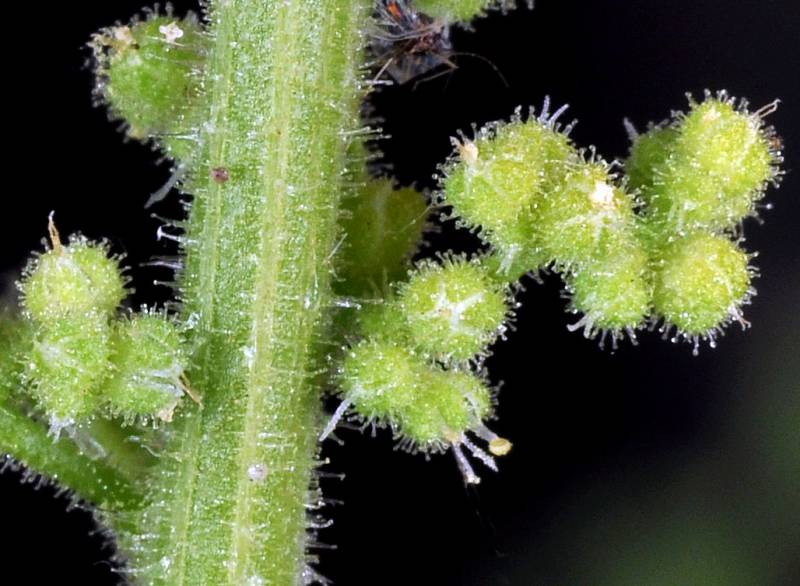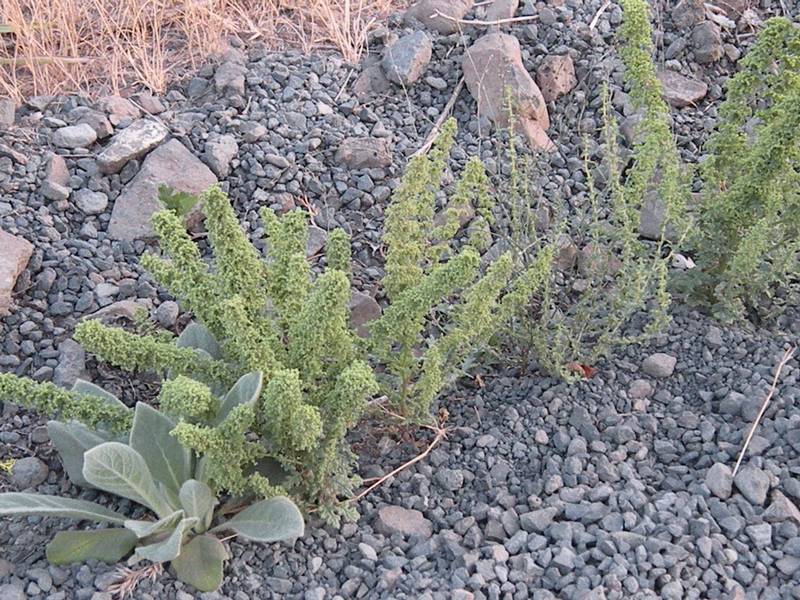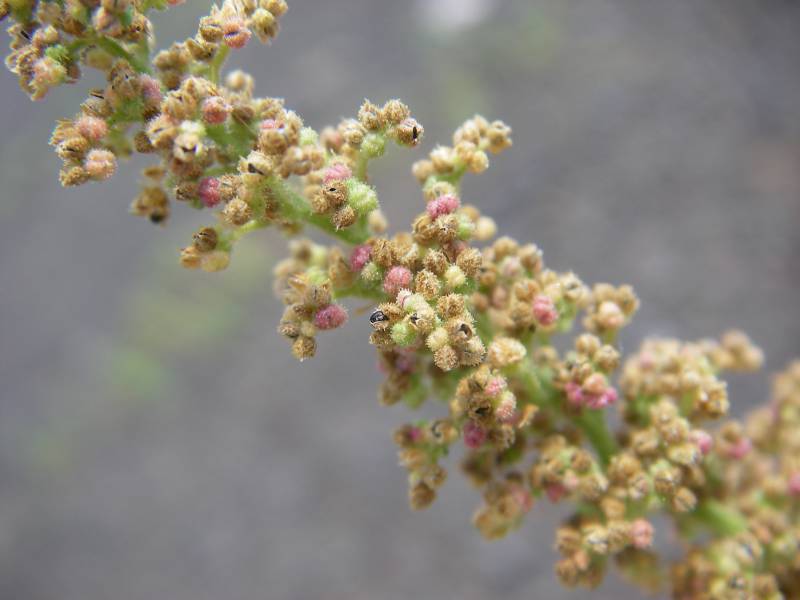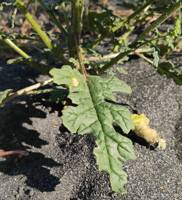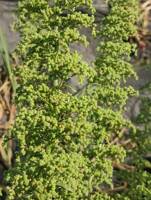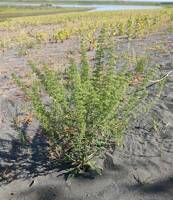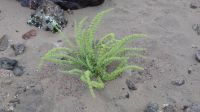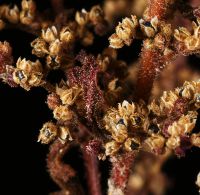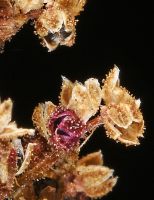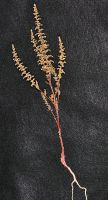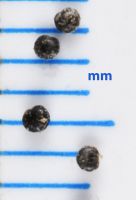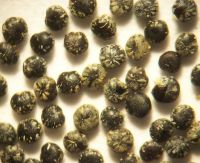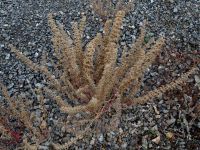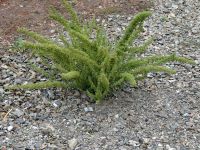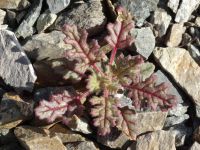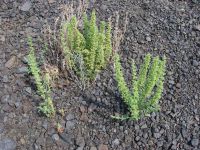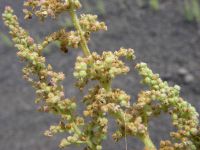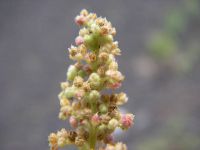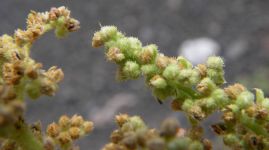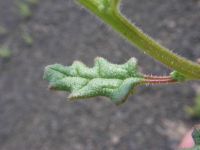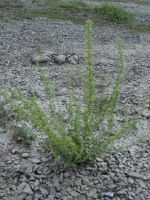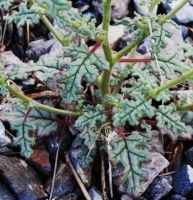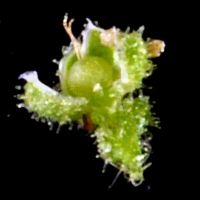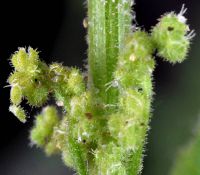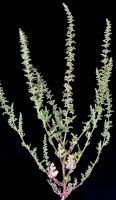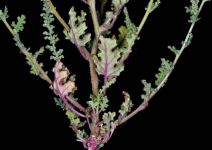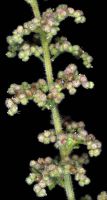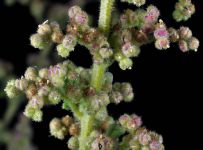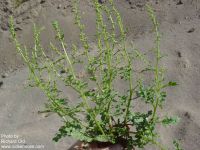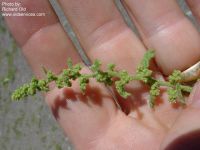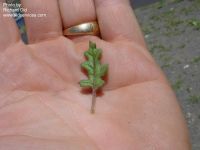Distribution: Occurring chiefly east of the Cascades crest in Washington; British Columbia to California, east across much of the U.S. and parts of southern Canada.
Habitat: Streambanks, gravel bars, roadsides, and other distrubed, open areas.
Flowers: May-October
Origin: Introduced from Eurasia
Growth Duration: Annual
Conservation Status: Not of concern
Pollination: Wind
Freely-branched, rounded annual 1.5-4 dm. tall, strongly glandular-pubescent and aromatic.
Leaves alternate, the blades oblong to obovate, 2-4 cm. long, wavy-lobed, the main lobes toothed, reduced upward and becoming bract-like; petioles slender.
: Flowers very numerous in long racemes of axillary dichotomous cymes, the inflorescence up to 4/5 the total height of the plant; perianth 5-cleft nearly to the base, the segments ovate-lanceolate; stamens 5, opposite the perianth lobes; styles 2.
The wall of the utricle thin, whitish, the fruit flattened on top, 0.6 mm. broad.
Publication: Ukrayins’k. Bot. Zhurn., n. s. 59: 383. 2002.
Teloxys botrys (L.) W.A. Weber
PNW Herbaria: Specimen records of Dysphania botrys in the Consortium of Pacific Northwest Herbaria database
WA Flora Checklist: Dysphania botrys checklist entry
OregonFlora: Dysphania botrys information
E-Flora BC: Dysphania botrys atlas page
CalPhotos: Dysphania botrys photos

